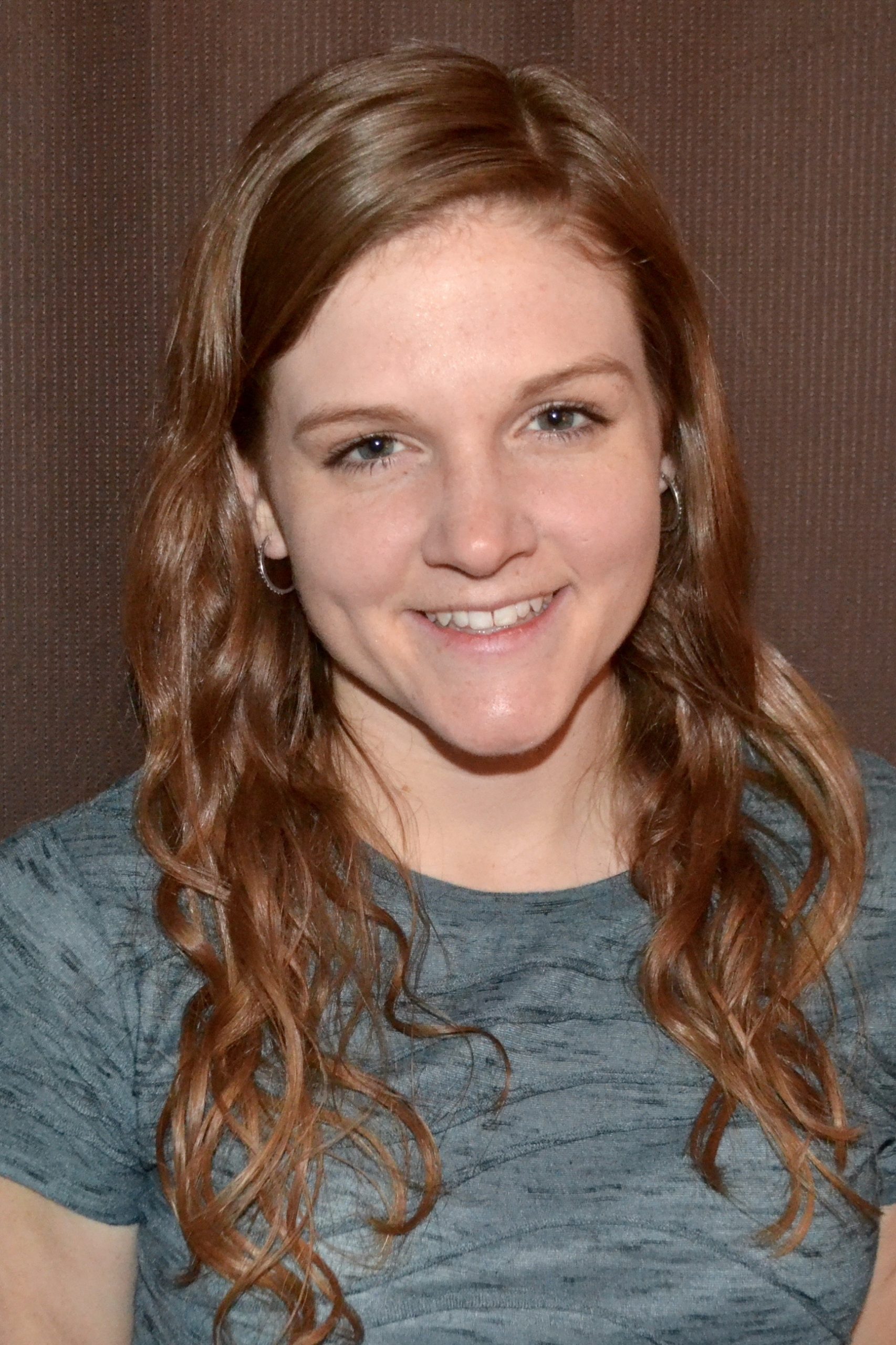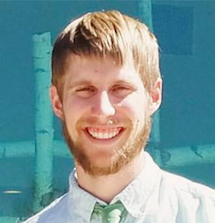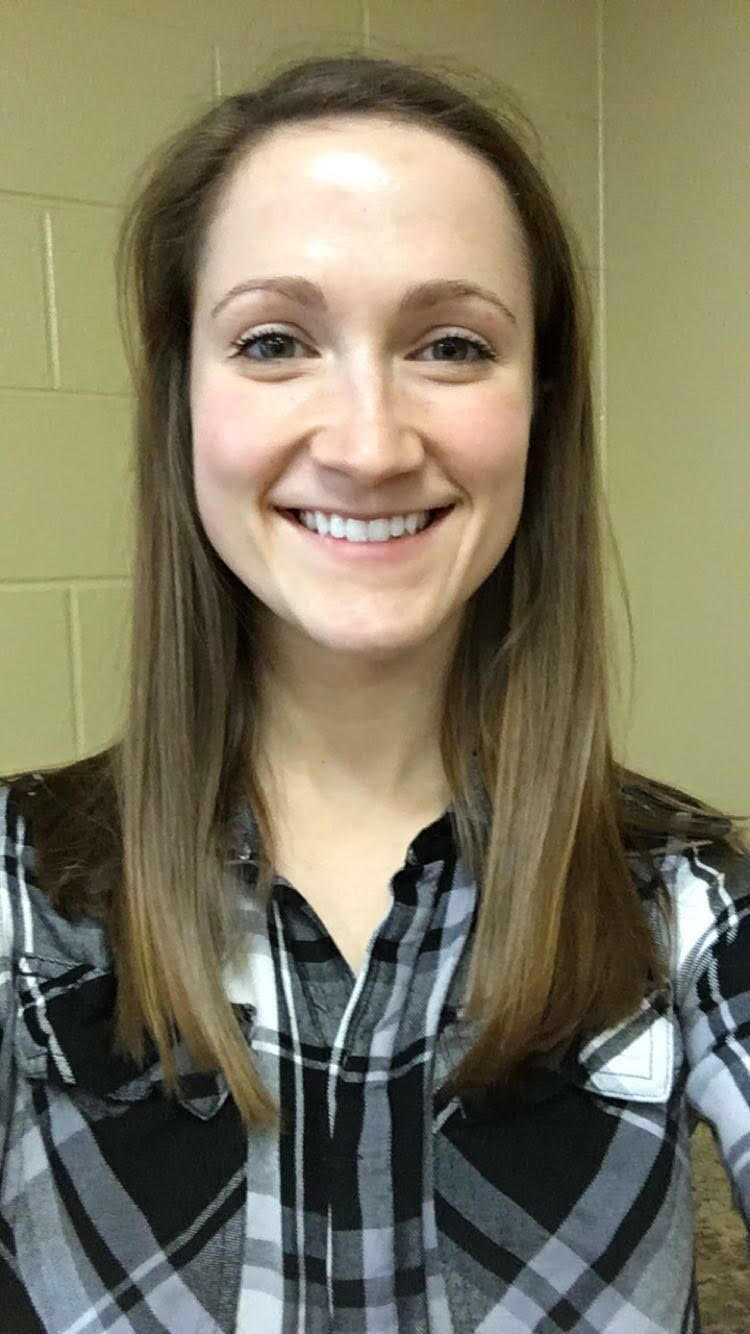Mathematical role models
Author: Lona
Author: Lona
Alumni educators share their exponential knowledge for student success.
—

Rebecca Hutter (Ehlers)
(’14 mathematics, ’15 MS education)
Rebecca is in her third year of teaching math and is currently teaching geometry at Northview Middle School in Ankeny, Iowa.
What I learned at ISU
“Being exposed to many areas of mathematics prepared me to teach math. My calculus courses gave me answers when curious ninth graders walked into my room after class and asked me what derivatives and integrals were. My statistics and probability courses allowed me to understand the theory behind the area models and tree diagrams I use to teach probability models. The geometry and proofs courses helped me understand logic and proofs at a deeper level. I pull ideas from the applications of math I studied at Iowa State including engineering, computer science and number theory.”
A+ classroom strategy
“I use active lessons, where kids get out of their seats and apply what they’ve learned. For example, after we learn the tangent ratio, I take the kids outside to three tall objects and we use math to find the objects’ heights. I give the students handmade clinometers (cardboard with a straw to look through and a protractor and weighted string to measure the angle) and I tell them the distance between where they are standing and the object. Then they measure the angle by looking through the clinometer up to the top of the object. After their calculations are set, they head back to class and use tangent to find the heights of those objects.”
Most rewarding part of math education
“Building relationships with students is one of the best aspects of teaching. It’s so awesome to hear the conversations my kids have about math. When a quieter member of a team shares a great idea, when a kid who struggled in algebra really starts to feel more confident with their geometry skills and starts to think math isn’t so bad, when a kid who isn’t super connected to school volunteers to share their solution strategy with the class, when the kid who failed the last test finally understands the concept or even when a student goes out of their way to say thank you – those are the moments where I remember why I teach.”
What I want my students to take away
“My classroom revolves around team-based learning. In the workforce, skills like collaboration, communication and problem solving are vital. I want my students to feel confident attacking a problem by offering ideas to their teammates. I want them to learn how to persevere through tough problems – to not shy away from a challenge.”
Math matters because . . .
“Math is everywhere. Math is logic. It’s problem solving. We encounter math in our daily lives and in our careers. The better we know and understand mathematics and the principles behind it, the better we can serve our world.”
—

Grant DeRocher (’14 mathematics)
Grant has been teaching for five years and currently teaches at Big Horn High School in Big Horn, Wyoming, specializing in geometry and pre-calculus.
What I learned at ISU
“Perseverance is key to success in mathematics. Don’t be too proud or too embarrassed to ask for help. You can never get too much practice in. Surround yourself with a network of people who you can help and who can help you.”
A+ classroom strategy
“One of my favorite tools to use with geometry is Geogebra, which allows me to use discovery activities for Geometric theorems. It allows students to see which relationships change and which relationships stay the same in figures.”
Most rewarding part of math education
“When students say that they understand math this year when they haven’t in the past. It means I am successfully reaching students who have not yet been reached and making math seem not so bad and scary to them.”
What I want my students to take away
“Math is useful as a tool for solving problems and can be helpful in making everyday life easier; it is not a formality or a punishment.”
Math matters because . . .
“All of human civilization has depended on it to advance to where we are now and also depends on it now to continue advancing.”
—

Shelby Banks (’17 mathematics)
Shelby has completed her first year of teaching seventh grade math, algebra and trigonometry in the Davis County Community School District in rural southeast Iowa.
What I learned at ISU
“While receiving my math degree, I began to see connections that I hadn’t seen yet. So many fields of math are connected to each other. I also realized the importance of theorems and proofs. In my own math career, I took formulas for granted. It was great to see why so many of them are true! I then realized that (once proven), some formulas are meant to be used! We shouldn’t try to recreate the wheel over and over again.”
A+ classroom strategy
“I really push for the students to talk about math! In general, I think math is thought of as a listen-and-practice class. However, I’ve seen that a better understanding of concepts is developed when students are in an environment that welcomes questions and conversation.”
A favorite math moment
“Being a first-year teacher, my greatest challenge is classroom management. I am still deciding the exact environment of my room and how to accomplish it with the students. My most rewarding moment so far is a conversation that I had with a student my first semester. No longer my student, she said she now misses me, because I pushed her to focus and understand math concepts, instead of leaving the learning up to her.”
Most rewarding part of math education
“The relationships that I’ve formed with some students. I feel l have become a positive role model for at least a few students. As a teacher, you must focus on the little positive things! I also feel most rewarded when students do well on assessments. It is a privilege to know that I’ve helped a student learn a new math concept.”
What I want my students to take away
“After making it through my first year, I want students to take away the idea that I truly care about them. I try to tell them often. In terms of math, I want students to feel flexible in writing equivalent equations. I want students to see the usefulness of functions in the real-world and the connection between the equation, graph and table of a function. I am a math nerd!”
Math matters because . . .
“Math matters because it requires students to continually ponder, build and connect ideas that are old and new.”